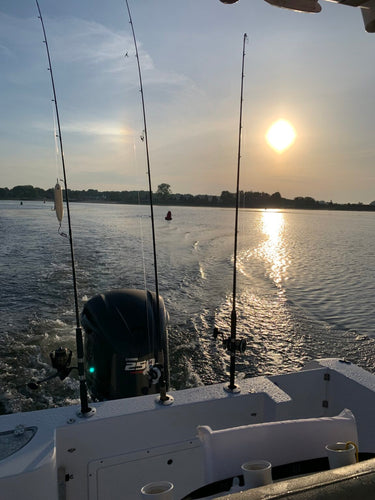Boat Safety

Boating is a popular recreational activity for many people, but it also comes with its own set of risks. That’s why it’s essential to prioritize safety on the water. In this blog post, we will go over ten items or procedures to help you be more safe while boating. We will also include an 11th bonus tip that highlights the importance of carrying an EPIRB on board.
- Wear a life jacket: Life jackets save lives, and they are mandatory in many states. Make sure everyone on board has a properly fitted life jacket before leaving the dock. Children should always wear a life jacket while on board.
- Check weather conditions: Always check the weather forecast before heading out. Weather can change rapidly, and being caught in a storm can be dangerous. If the forecast calls for high winds or thunderstorms, it’s best to stay on shore.
- Have proper communication devices: Communication devices such as a VHF radio or cell phone can be crucial in case of an emergency. Make sure you know how to use them and that they are fully charged and in working order.
- Follow speed limits: Speed limits exist to protect everyone on the water. Excessive speed can cause accidents and can be dangerous to other boaters.
- Assign a designated driver: Just like when driving a car, it’s important to have a designated driver when boating. The driver should be sober and focused on operating the boat safely.
- Stay aware of your surroundings: Be aware of other boats, buoys, and potential hazards in the water. Always keep a lookout and maintain a safe distance from other boats.
- Have proper lighting: Make sure that your boat has proper lighting, including navigation lights. Navigation lights help other boats see you at night and in low visibility conditions.
- Keep a first aid kit on board: In case of an emergency, it’s important to have a first aid kit on board that includes supplies such as bandages, antiseptic, and pain relief medication.
- Practice safe boating habits: This includes things like not standing up in a moving boat, keeping hands and feet inside the boat at all times, and not overloading the boat with too many passengers or too much gear.
- Limit alcohol consumption: Alcohol consumption can impair judgment and reaction time, making it much more difficult to operate a boat safely. Boating under the influence is illegal and can result in severe penalties.
- Carry an EPIRB: An EPIRB is an Emergency Position-Indicating Radio Beacon. It is a device that transmits a distress signal to search and rescue authorities when activated. EPIRBs are vital in emergency situations and can help rescuers locate you quickly. EPIRBs can be activated both manually and via hydrostatic release. A hydrostatic release is a device that is attached to the EPIRB and is designed to release the device when it is submerged in water. This is particularly useful in case the boat capsizes or sinks, as the EPIRB will automatically activate and send a distress signal to search and rescue authorities.
In conclusion, boating can be a fun and enjoyable activity, but it’s important to prioritize safety on the water. By following these ten items or procedures, you can help ensure that you and your passengers have a safe and enjoyable boating experience. Remember to carry an EPIRB on board, so you can quickly call for help in case of an emergency. Stay safe on the water!
Tags
boat safety
boating
epirb
life jacket
safe boating
safety




